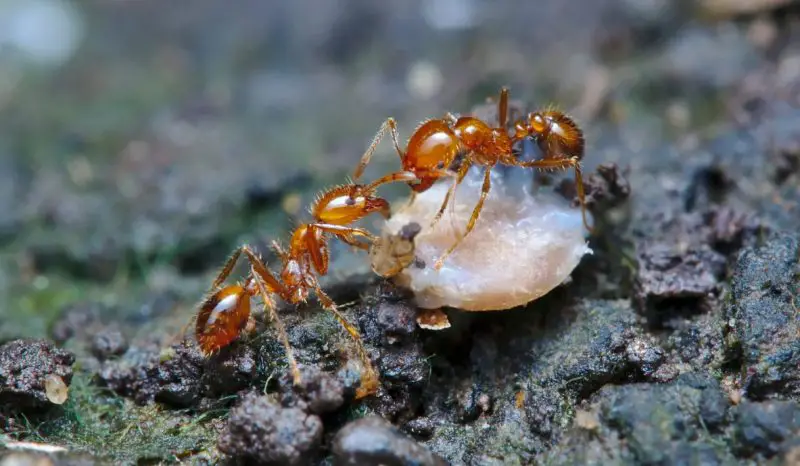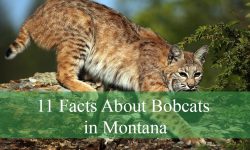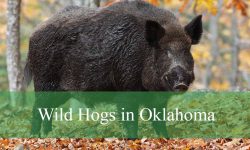Fire ants have lived in Georgia long enough to become a familiar part of the landscape, yet most residents only know their painful sting. Beneath the surface, these insects build complex societies that operate with remarkable precision. Their colonies spread quietly through yards, farms, and open fields, moving underground in patterns that easily go unnoticed.
Georgia’s warm climate and long growing season give fire ants an environment where they thrive. They reproduce quickly, adapt to changing conditions, and form networks that stretch farther than most people expect. Their behaviors are often misunderstood, leading to myths that complicate how people interact with them.
Knowing the truth about fire ants reveals why they are so successful and how deeply they influence Georgia’s ecosystems, agriculture, and urban spaces.
Understanding Fire Ants in Georgia

How Fire Ants Arrived
The fire ants found in Georgia are primarily the red imported fire ant (Solenopsis invicta). They arrived in the United States in the 1930s through shipping routes along the Gulf Coast. From there they spread steadily across the Southeast. Georgia’s moist soil and mild winters made it one of the states where the species established itself early and intensely.
Their spread continues each year through mating flights and colony budding. New queens can travel several miles with the wind. This silent expansion explains why fire ant mounds appear in places where no ant activity was noticed before.
Why They Thrive in Georgia
Georgia’s climate supports fire ant growth almost year-round. Warm soil accelerates colony development and helps ants forage more efficiently. Rainfall creates ideal moisture levels for tunneling while long summers provide abundant food sources.
Human activity also plays a role. Lawns, golf courses, parks, farmland, and construction sites all create disturbed soil that fire ants colonize quickly. Many native ant species struggle in these altered environments which allows fire ants to dominate.
Their resilience and adaptability are major reasons they remain firmly rooted across the state.
Hidden Behaviors Most People Don’t Notice
The Underground Architecture of Fire Ant Mounds
A visible mound is only the surface expression of a much larger colony beneath the soil. Fire ants construct extensive tunnels that regulate temperature and humidity. These passageways allow them to raise brood safely and store food without being exposed to predators or heat.
Workers continually adjust the structure depending on weather patterns. During hot days, the colony moves deeper underground. During cooler mornings, they climb upward to warm themselves. This dynamic design allows them to survive in conditions that might be lethal to other insects.
The mound functions more like a living organism than a simple pile of dirt.
Their Secret Communication System
Fire ants communicate through chemical signals called pheromones. Each message carries information about threats, food, or colony activities. When one ant discovers danger it releases alarm pheromones that mobilize workers within seconds. This explains why fire ant stings often happen in clusters rather than isolated incidents.
Their communication system is so efficient that a disturbance anywhere near the colony can trigger a unified response. Although fire ants appear chaotic on the surface, their movements follow a defined structure guided by scent trails.
The Floating Raft Phenomenon
One of the most surprising behaviors occurs during Georgia’s flooding events. Fire ants link their bodies to form floating rafts that carry the queen and brood. These rafts can survive for days, drifting until they find dry land where a new colony can form.
This adaptation allows fire ants to withstand storms and river overflow that would destroy most other insects. It also contributes to their rapid spread across waterways and floodplains.
Their ability to persist through natural disasters gives them an ecological advantage that few species share.
Fire Ant Diet and Ecological Impact
What Fire Ants Really Eat
Fire ants are opportunistic feeders. They consume insects, plant materials, seeds, honeydew from aphids, and even small vertebrates. Their varied diet allows them to survive in urban environments as easily as they do in fields and forests.
In Georgia, their appetite for pests such as ticks and fly larvae can provide ecological benefits. However, their impact on beneficial insects often outweighs these advantages. Butterflies, ground-nesting bees, and small reptiles may all become unintended prey.
Their feeding habits shape the composition of local ecosystems in subtle but significant ways.
How They Affect Agriculture
Georgia’s agricultural landscape includes crops like peanuts, corn, soybeans, and pecans. Fire ants can damage young plants by tunneling around roots or feeding directly on seedlings. They also tend to protect sap-feeding insects such as aphids in exchange for honeydew. This relationship increases pest pressure on crops.
Their mounds interfere with farm equipment and irrigation systems. On cattle farms, fire ant presence can injure newborn animals that explore the soil and brush against hidden colonies.
Although they occasionally reduce harmful pests, their overall impact on agriculture remains a challenge.
Native Species Displacement
Fire ants compete aggressively with native ant species. They overwhelm local colonies and disrupt natural foraging networks. This change alters predator prey relationships and reduces the diversity of insects that support Georgia’s ecosystems.
The loss of native ants also influences soil aeration patterns and seed dispersal, making fire ants an ecological force that reshapes the environment in subtle but long lasting ways.
Fire Ant Reproduction Secrets
Mating Flights Above Georgia Skies
During warm months, fire ant colonies release winged males and queens for mating flights. These flights occur suddenly, often after rainfall. The queens mate with multiple males, store sperm, and then search for nesting sites.
Once underground, a queen can produce thousands of eggs over her lifetime. A single successful queen is enough to create a massive colony that spreads through large sections of land.
Their reproductive efficiency is one of the keys to their dominance.
Multi-Queen Colonies and Why They Matter
Some fire ant populations in Georgia form polygyne colonies, meaning multiple queens live and reproduce together. These colonies grow faster and spread more effectively than single-queen systems.
Polygyne colonies are less territorial which allows them to form large interconnected networks of mounds. This trait makes control efforts significantly harder.
Understanding this structure is essential for managing fire ant populations effectively.
Fire Ant Defense Explained
Why Their Sting Hurts So Much
A fire ant sting contains alkaloid venom that produces a burning sensation followed by a white pustule. The pain results from both the chemical composition of the venom and the coordinated attack of dozens of ants responding to pheromone signals.
Their stings evolved as protection for the colony. When the mound is threatened workers swarm quickly and sting in unison. This reaction is what makes fire ants more intimidating than many native ant species.
The Myth of Fire Ant Aggression
Fire ants are defensive rather than naturally aggressive. They react strongly when their nest is disturbed but rarely seek out conflict away from it. Most stings occur when someone steps on a mound or leans against soil where ants are foraging.
Understanding their defensive nature helps people avoid unnecessary encounters.
Fire Ants in Georgia Landscapes
Why Mounds Appear Overnight
Fire ant workers move soil constantly. After rainfall or warm evenings, colonies push large amounts of dirt to the surface to regulate temperature and humidity. This rapid excavation creates the appearance of overnight mounds.
Because fire ants build downward rather than upward, the mound is only a small indicator of the colony’s true size.
Urban vs. Rural Populations
Fire ants thrive in both city and countryside. In urban spaces they establish mounds in parks, athletic fields, sidewalks, and road medians. Rural areas offer crop fields, pastures, and unmanaged land where colonies spread with fewer obstacles.
Their adaptability explains why Georgia residents encounter them in almost every setting.
Managing Fire Ants Safely
Why Home Remedies Often Fail
Many household solutions do not reach the heart of the colony. Fire ants simply relocate deeper underground or spread to new areas. Pouring boiling water or chemicals onto mounds rarely destroys the queen which means the colony survives.
Effective control requires understanding colony structure and behavior.
Long Term Management Strategies
Baiting systems remain one of the most reliable methods. Worker ants carry the bait deep into the colony where it eventually reaches the queen. Growth regulators slow reproduction which reduces mound expansion over time.
Maintaining healthy soil ecosystems also supports native ants that compete with fire ants naturally. Integrated approaches work far better than short term treatments.
Safety Tips for Georgia Residents
• Avoid disturbing visible mounds
• Wear protective footwear in infested areas
• Keep outdoor play areas inspected and clear
• Teach children to recognize and avoid fire ant mounds
Awareness reduces most risk of stings.
Frequently Asked Questions
Are fire ants found everywhere in Georgia?
They are widespread throughout the state, especially in warm and disturbed soil environments.
Why do fire ant stings form white bumps?
Their venom causes a sterile pustule that appears hours after the sting.
Can fire ants kill plants?
They can damage seedlings and roots, especially on farms and gardens.
Do fire ants attack animals?
They may sting newborn or injured animals that cannot move away quickly.
How deep are fire ant colonies?
Tunnels can extend several feet underground, far beyond the mound surface.
Are fire ants active in winter?
They slow down but remain active in warm soil pockets during mild winters.
How fast do fire ants spread?
Queens from mating flights can establish new colonies miles away. Polygyne colonies spread by budding even faster.
Can weather conditions reduce fire ant numbers?
Flooding redistributes colonies but rarely eliminates them because of their raft-forming ability.
Are all fire ant species invasive?
Most fire ant problems in Georgia involve the invasive red imported fire ant.
What is the best way to control them?
Baiting systems are the most effective long term strategy.
Final Thoughts
Fire ants have become an inseparable part of Georgia’s natural and urban landscapes. Their complex societies, hidden survival strategies, and rapid reproductive cycles make them one of the most fascinating and challenging insects in the region. While their stings can be painful and their impact on agriculture significant they also reveal a remarkable example of adaptation.
Understanding the truth behind their behavior helps people manage fire ants more effectively and appreciate the ecological forces shaping Georgia’s environment. Awareness, prevention, and respect for their biology are key to living safely alongside these resilient insects.






